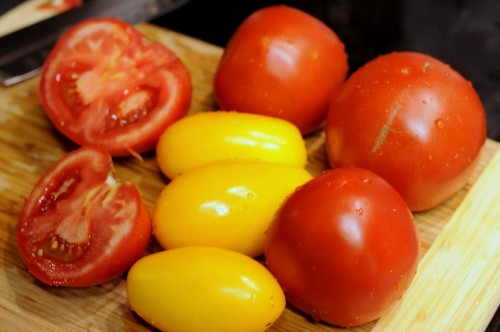I grew up dipping the
adobo in my spoon in
munggo, a soupy stew made with green mung beans, sauteed tomatoes, onions, and horseradish leaves (malunggay). It just seemed to go side by side with the ubiquitous adobo and complimented the saltiness with the flavor of beans and tomatoes. In the US,
malunggay can be found in the frozen section of good Filipino and Asian grocery stores, but we make do with a handful of frozen chopped spinach added towards the end of cooking.
The typical preparation of munggo is a little thicker than how we make it, but we prefer a more watery soup we can slurp alongside our meal or pour over our rice. The dominant flavors include onions, tomatoes and fish sauce.
Soaking mung beans overnight in water lets it cook quicker and create a unique texture when done.
In a pot with water, boil the mung beans on medium heat until soft, about twenty minutes.
In a separate pan, saute onions, tomatoes, and fish sauce.
When tomatoes are soft, add to the pot with mung beans.
Add bouillon and simmer for another fifteen minutes.
Add malunggay or chopped spinach before serving. Season with fish sauce to taste.
Serve alongside rice and adobo for your Filipino Cuisine 101.
Ginisang Munggo (Mung Bean Soup)
1/2 cup mung beans
1 ripe tomato, chopped coarsely
1/2 onion, choppped
1/2 small package, frozen chopped spinach
1/2 beef or vegetable bouillon
1 tablespoon fish sauce, more to taste
Soak beans overnight. Simmer until soft for about twenty minutes. In a separate pan, saute onion and tomatoes until soft and add to the pot. Add bouillon and simmer for another fifteen minutes. Add malunggay or chopped spinach before serving. Season with fish sauce to taste.



